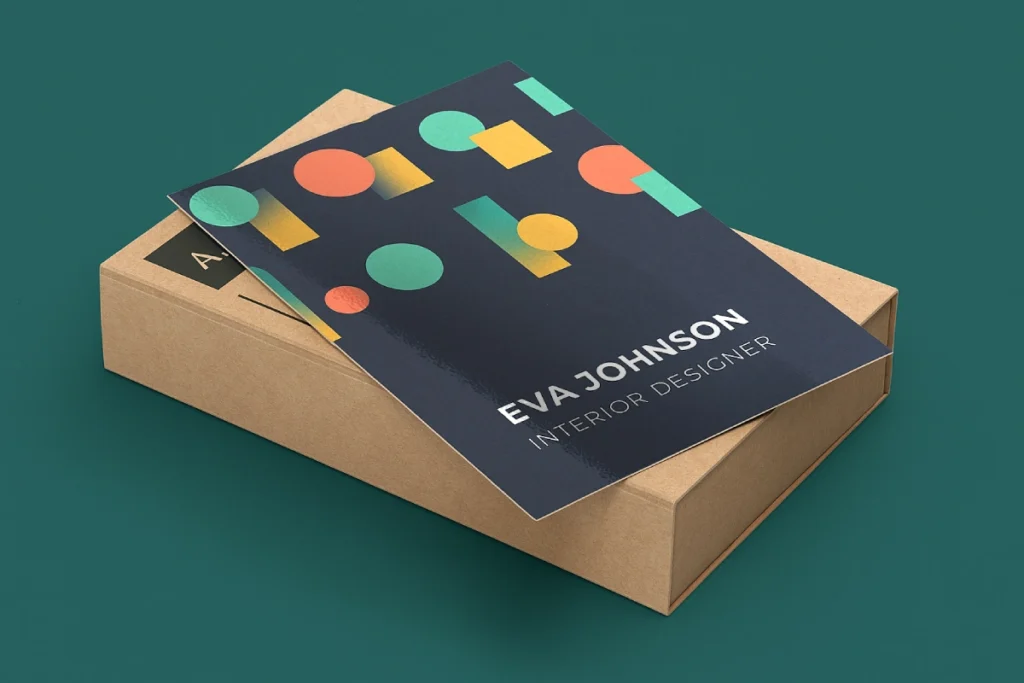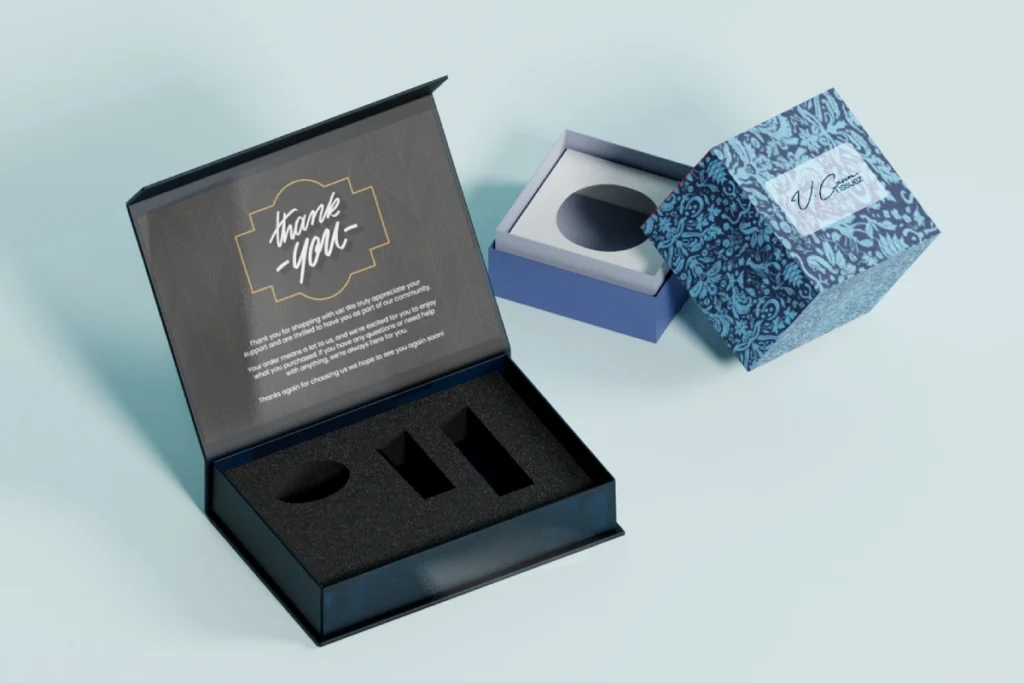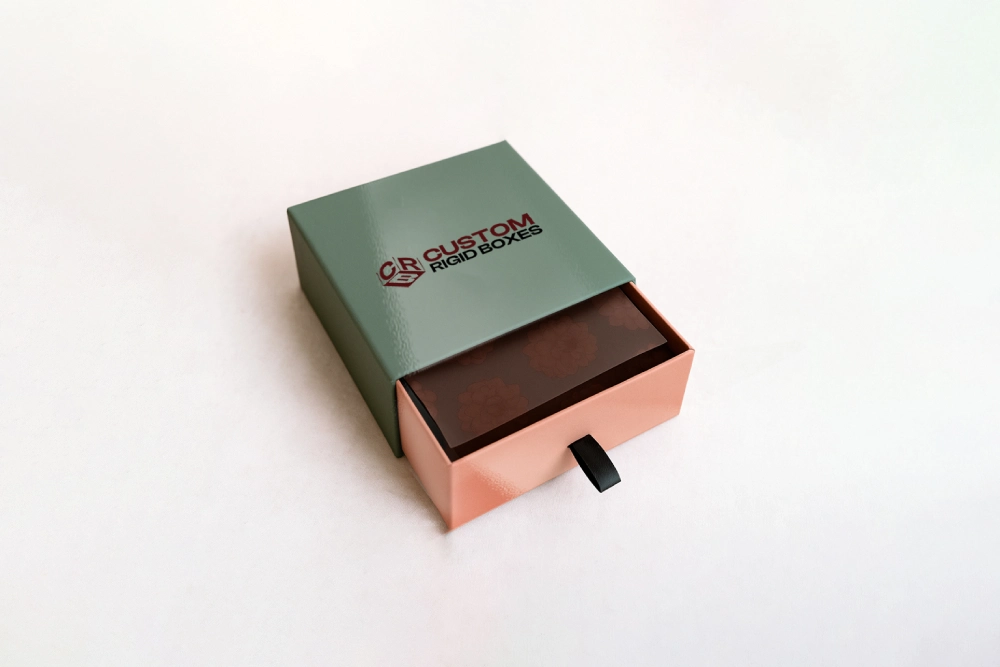Have you ever picked up a business card, brochure, or product packaging that felt extra smooth and looked incredibly vibrant? Chances are, it was finished with a UV coating. This special finishing technique does more than just add a glossy shine. It provides a protective layer that makes printed materials stand out and last longer.
If you’re curious about what makes UV coating so special and why it might be the right choice for your next print project, you’ve come to the right place. Let’s dive in.
What is UV Coating?
In brief, UV coating, also known as ultraviolet coating, is a liquid-based coating applied to a printed surface. The magic happens when the coated material is exposed to UV light. This instant exposure cures (or hardens) the liquid into a dry, super-glossy, and durable finish.
Unlike traditional finishes that require air-drying, the fast-curing process of UV coating speeds up production times. This instant hardening creates a tough, plastic-like film that protects your printed materials from daily wear and tear.
What is UV coating made of?
Wondering about the UV coating process?
Here’s the process!
The liquid formula used for UV coating is a clear compound primarily composed of acrylic polymers, mixed with other chemicals such as polyethylene, calcium carbonate, and kaolinite. Photoinitiators are also added to the UV coating liquid, which are chemical compounds that react when exposed to UV light, causing the mixture to harden almost instantly through a process called photopolymerization.
Types of UV Coating
UV coating offers a wide range of aesthetic and functional possibilities beyond a simple shine, with various types designed to create specific looks and tactile sensations. The different types of finishes can completely alter the perception of a printed product, creating striking visual effects and elegant textures.
The most common types include:
- Gloss UV: This coating has a highly reflective and shiny finish that makes colors appear more professional and eye-catching.
- Matte UV: This finish offers a non-reflective, soft, and satin appearance that exudes sophistication and elegance.
- Spot UV: Spot UV is selectively applied to specific areas, such as a brand logo or image. This technique creates a striking contrast between glossy and matte surfaces, adding depth and drawing attention to key design elements.
- Soft-Touch UV: This specialized coating creates a velvety, smooth texture that is pleasant to the touch, offering a luxurious and high-end tactile experience for the customers. Moreover, it’s resistant to fingerprints and scuff marks, making it ideal for premium packaging.
- Textured UV: Designed to add tactile effects, textured coatings can replicate various patterns and textures, including those of leather, sandpaper, or embossed designs.
Is UV Coating Good?
Yes! UV coating is an excellent choice for many print projects.
Here are some promising benefits of using UV coating.
- Superior Visuals: The high-gloss sheen intensifies colors and adds a premium, eye-catching finish, adding to the superior visuals.
- Enhanced Durability: Creates a durable, hard surface that resists scratches, smudges, and abrasion, prolonging the life of your prints.
- Quick Production Time: The instant-curing process enables faster turnaround times for projects.
- Variety of Finishes: The UV coating machine offers a range of finishes, including gloss, matte, and specialty options such as “spot UV” for highlighting specific areas.
- Eco-Friendly Process: Since UV coatings are 100% solid and contain no solvents, they release very few VOCs during the curing process.
What Is UV Coating Used for?
This innovative coating has been trusted by many businesses across industries.
Let’s break it down!
On Paper

What is UV coating on paper?
On paper, UV coating acts as a shield and a visual enhancer. It’s most commonly used on thicker, heavier paper stocks, such as those used for business cards, postcards, and book covers. This finish intensifies colors and adds a professional, high-end shine that catches the eye, making text and images appear sharper and more vibrant. It’s a quick way to upgrade your print from ordinary to extraordinary.
On Custom Packaging Boxes

So, what is UV coating on boxes?
When applied to boxes, UV coating serves a dual purpose: it significantly enhances the visual appeal while providing a durable, protective layer. This coating is perfect for custom boxes made of rigid stock, as these boxes are already premium. Applying UV coating to rigid boxes moves their value to an even higher level. That’s why these boxes are preferable for luxury goods, electronics, and cosmetics.
For brands in the luxury market, this finish isn’t just about protection. It’s also about creating a stunning first impression that grabs attention and communicates high quality.
Moreover, the rigid box manufacturing process has already built the boxes to be sturdier than standard boxes. For example, magnetic closure boxes, shoulder neck boxes, or collapsible rigid boxes, and more. Hence, the addition of a UV coating provides an extra layer of protection.
Which products can look more luxurious when present in rigid boxes with UV coating?
Cosmetics and Perfumes: Spot UV highlights your brand name, logo, or delicate patterns on the boxes.
- Electronics: Think about rigid set-up boxes for smartphones and other devices that feature UV coating. The real-life brand examples include the Google Pixel phone, Apple packaging, and the latest Samsung packaging.
- Jewelry and Watches: High-end jewelry boxes coated with UV coating can provide a premium finish that complements the luxury of the item inside.
Additional Tips on UV Coating Design
If you’re considering applying a UV coating to your design, consider the tips below as well.
To get the most out of your UV coating, consider these design tips:
- Use Spot UV to create contrast and highlight your business logo, image, or specific text against a matte or uncoated background.
- If your design requires folding, please notify your printer so they can score the paper properly beforehand.
- Use it strategically or choose a matte UV option for a smoother, less reflective finish.
- UV coating works best on heavier paper stocks that can withstand the coating and UV light without deteriorating.
The Takeaway
No doubt, UV coating offers a wide range of aesthetic and functional possibilities beyond a simple shine, with various types designed to create specific looks and tactile sensations. The different types of finishes can completely alter the perception of a printed product, creating striking visual effects and elegant textures.
The promising benefits of using UV coating include superior visuals, enhanced durability, quick production times, a variety of finishes, and an eco-friendly process.
It’s most commonly used on thicker, heavier paper stocks, such as those used for business cards, postcards, and book covers.
When applied to boxes, UV coating serves a dual purpose: it significantly enhances the visual appeal while providing a durable, protective layer. This coating is perfect for custom rigid boxes, as these boxes are already premium. Applying UV coating to rigid boxes moves their value to an even higher level. Where to get customized rigid boxes? Here, at Custom Rigid Boxes!
FAQs
What is UV coating?
UV coating, also known as ultraviolet coating, is a liquid-based coating applied to a printed surface. When the coated material is exposed to UV light, it exposes cures (or hardens) the liquid into a dry, super-glossy, and durable finish.
What are the benefits of using UV coating?
The promising benefits of using UV coating include superior visuals, enhanced durability, quick production times, a variety of finishes, and an eco-friendly process.
What is UV coating on product packaging boxes?
When applied to boxes, UV coating serves a dual purpose: it significantly enhances the visual appeal while providing a durable, protective layer.
Which products can look more luxurious when present in rigid boxes with UV coating?
Various products will look more luxurious when present in rigid boxes with UV coating, such as cosmetics and perfumes, electronics, as well as jewelry and watches.



